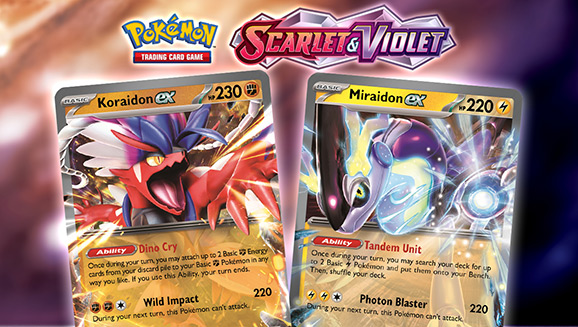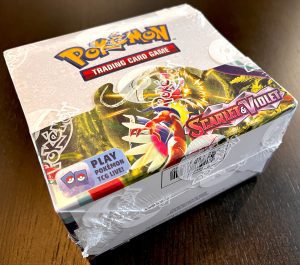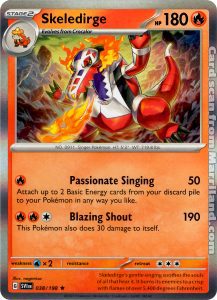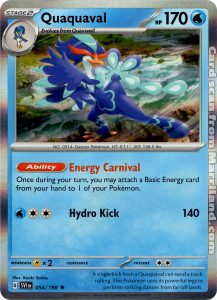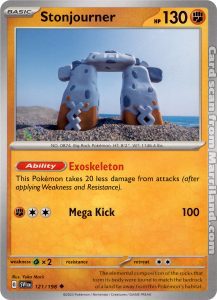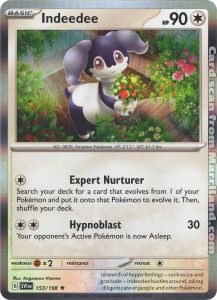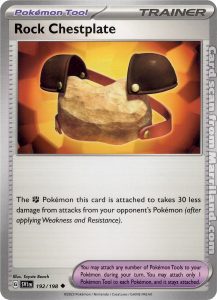The newest Pokémon TCG expansion and first entry into the 9th Generation has officially released worldwide today. The Scarlet & Violet expansion set features new Pokémon from the video games of the same name, brings back “Pokémon ex” (lowercase “ex”—these ones can be evolutions like the old Ruby & Sapphire era Pokémon-ex!), and also introduces a few Tera Pokémon ex—Arcanine ex and Gyarados ex.
You can find the complete set list and information on all of the cards (with scans for 180+ cards) over on the Scarlet & Violet section of the Marriland TCG database.
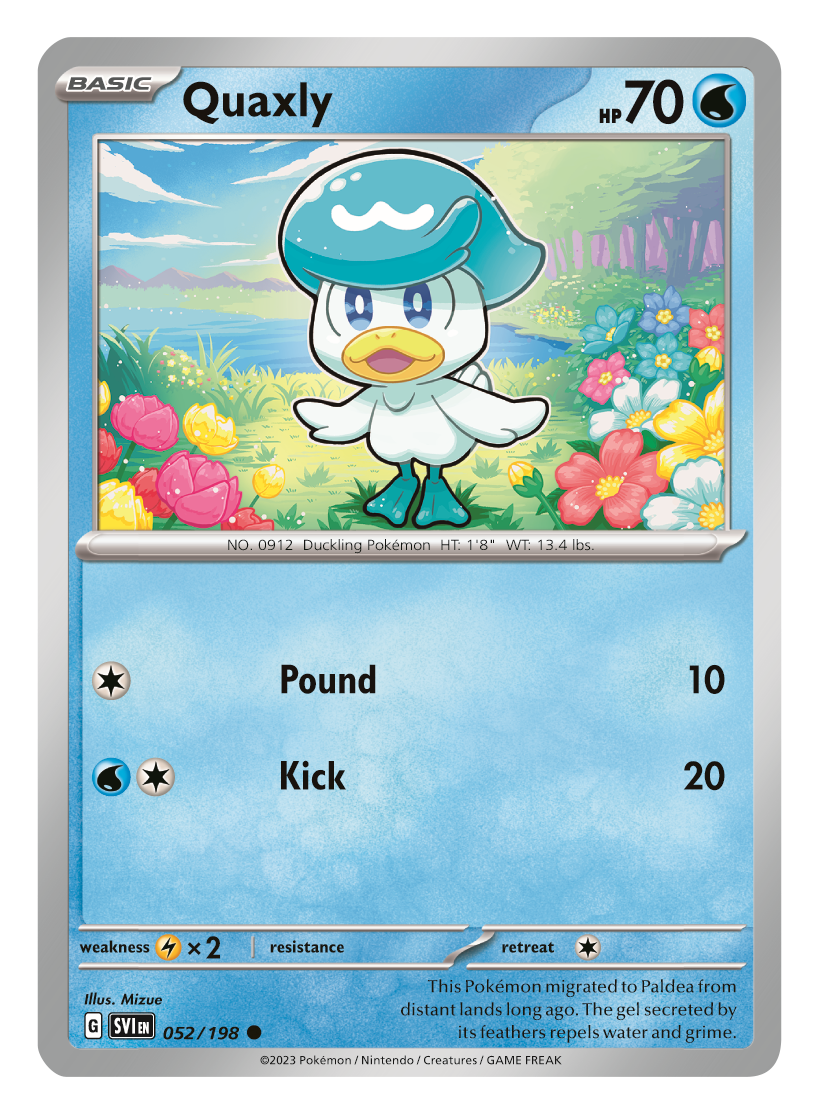
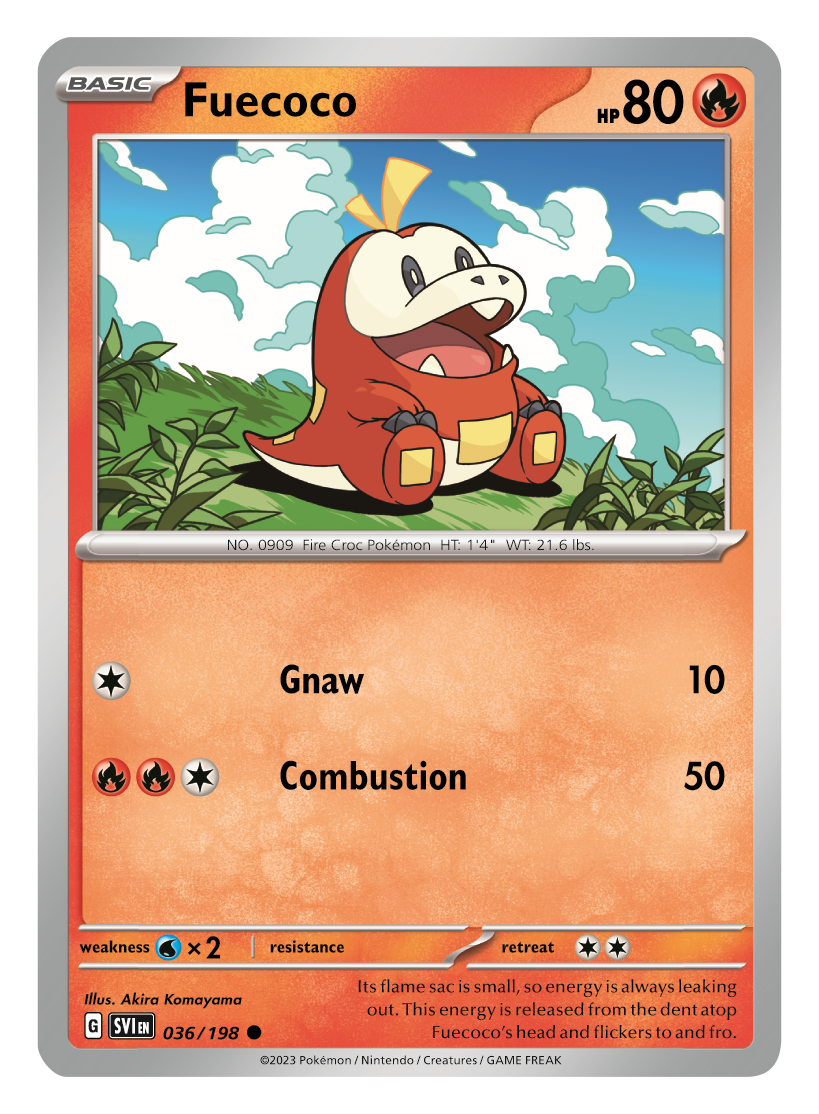
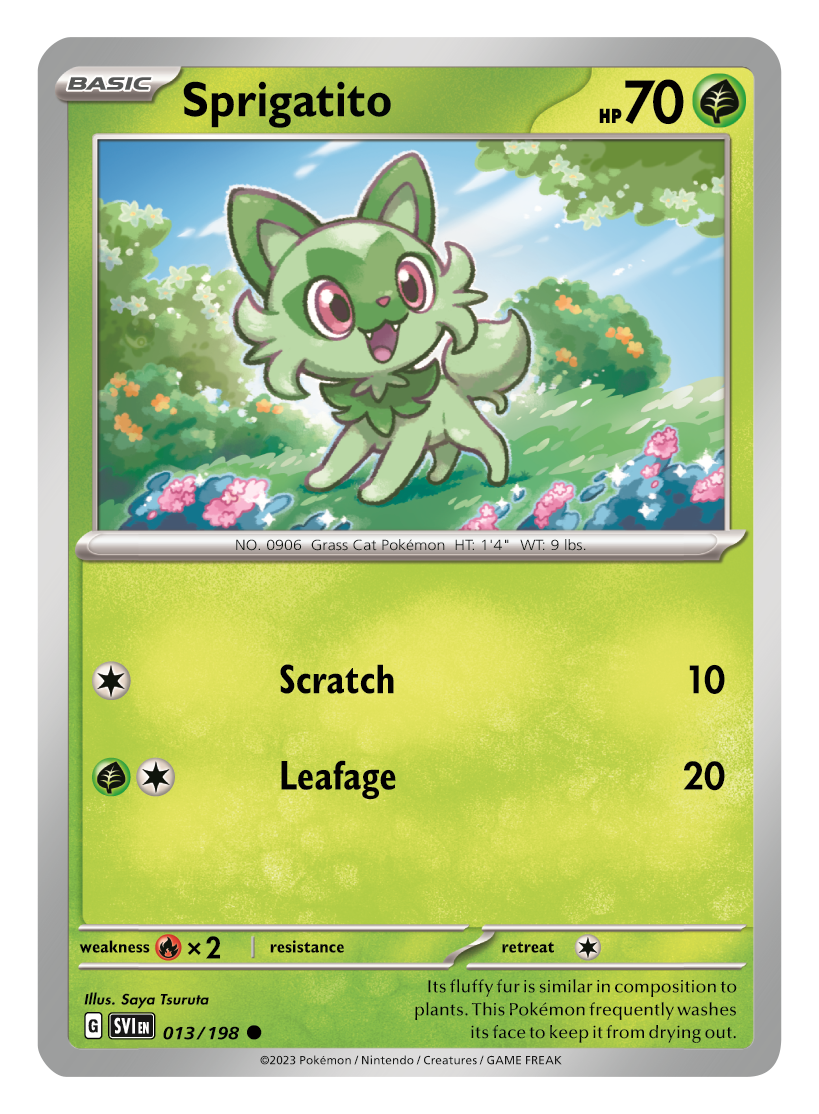
Otherwise, keep reading down below to hear a bit more about highlights from the new set, and featured cards that Marriland had a chance to check out early, thanks to The Pokémon Company International providing some product ahead of launch.
Marriland’s Thoughts on the New Expansion
Although I have previously reviewed the Scarlet & Violet Build & Battle box and the Scarlet & Violet Elite Trainer Box that Pokémon sent me, those were focused more on the products themselves rather than the individual cards, for the most part. Pokémon was also kind enough to send me a full booster box of the new set, which contains 36 booster packs.
As previously reported, the Scarlet & Violet expansion brings forth quite a few design changes to the cards and even the booster packs. Let’s take a look at those changes first.
Silver Border Cards and Changed Foil Patterns
While most Pokémon TCG cards outside of Japan have had their signature yellow border ever since the beginning of the Pokémon TCG, they’ve actually had a silver border in the Japanese versions of the cards since the Diamond & Pearl era of the TCG.
Scarlet & Violet have changed this: now, the card borders will be the same silver color internationally just as it is in Japan. This took me quite a lot to get used to, to be honest, because I’ve been used to that yellow border for such a long time. I’ve imported Japanese cards in the past and have gotten a few miscellaneous ones here and there, so I’m not unfamiliar with the silver border, but to see the silver borders with English text was quite an experience.
Additionally, the holofoil patterns for holo-rare cards has been changed. You’ll now see the holofoil pattern extend to the silver border, in addition to the inside of the card’s artwork.
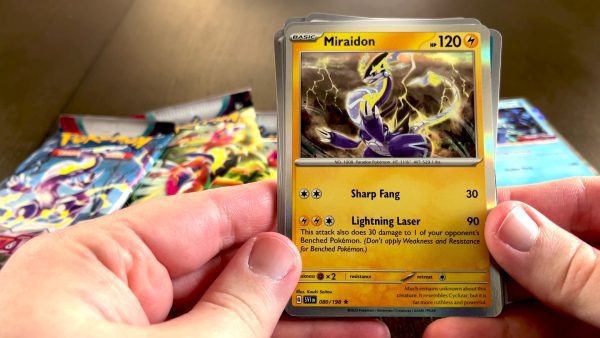
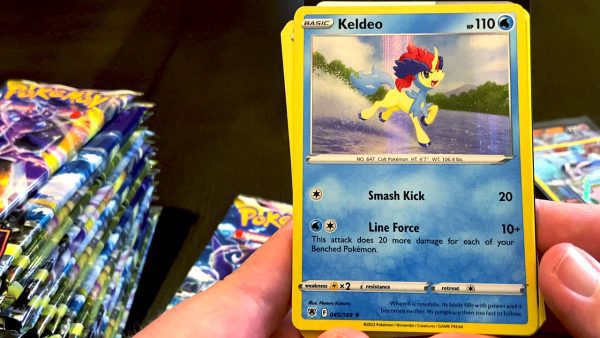
It’s a nice change and also reflects how the holofoil patterns are in Japan, so having the cards appear more uniform is ultimately a good thing, in my opinion, even if it takes a bit of getting used to. They didn’t change the back side of the Scarlet & Violet TCG cards to match the Japanese version, though, don’t worry—they’re still the same design as when the game initially launched.
The reverse-foil pattern is also different than it was from previous sets, although this tends to change rather often, so it’s not particularly surprising.
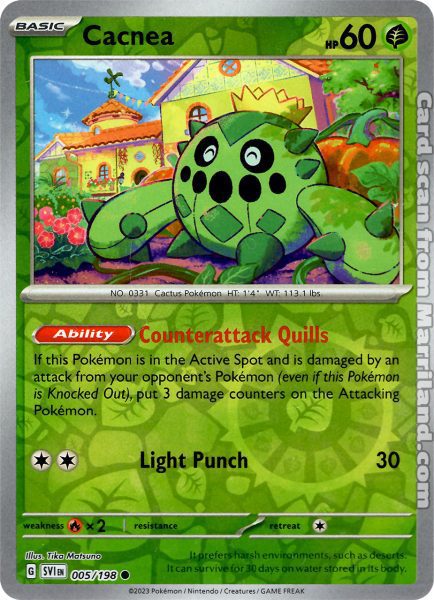
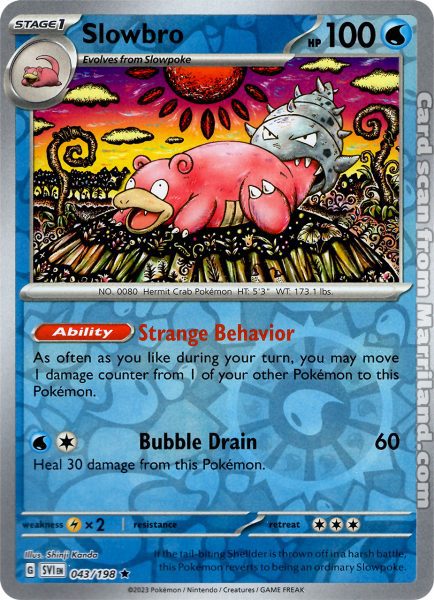
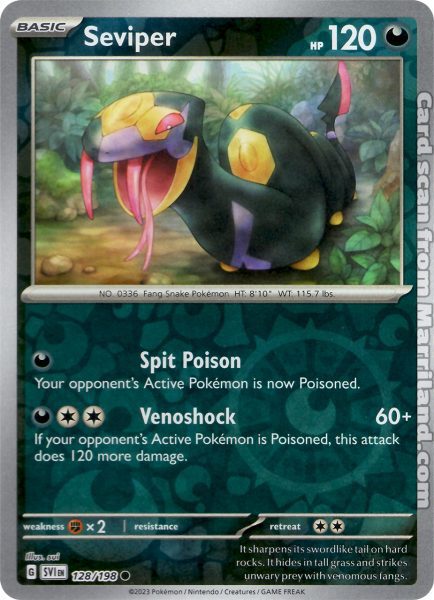
Here’s a look at three card scans that show the reverse-foil pattern. It features the type of the Pokémon quite prominently in a rather busy pattern. I’ll admit, sometimes this can make the cards a bit hard to read, especially when viewed in with less-than-ideal lighting conditions, but the patterns do at least look pretty cool.
I’ll also say that for some types, such as Dark (yes, Seviper is “Dark” type—the TCG has no Poison-type, so Poison-type Pokémon are Dark-type in the card game), it is not very noticeable, which sometimes left me doing a double take to see if it was a reverse-foil or not.
Booster Pack Contents
The cost of booster packs has risen once again, now costing $4.49 (USD) per booster pack. However, that being said, at least the contents of the booster packs have been upgraded a bit. You get 10 cards plus 1 Basic Energy card per pack, as well as a Pokémon TCG Live code card, which only works for TCG Live and is no longer backwards compatible with the older Pokémon TCG Online (PTCGO) like previous expansions.

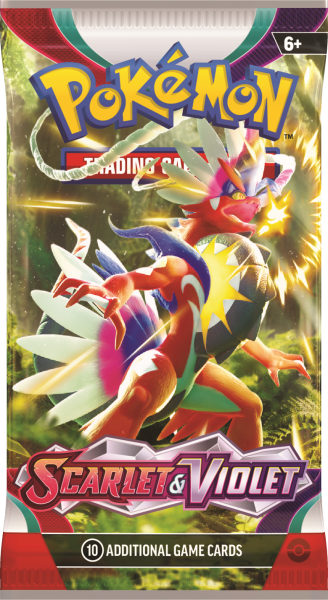
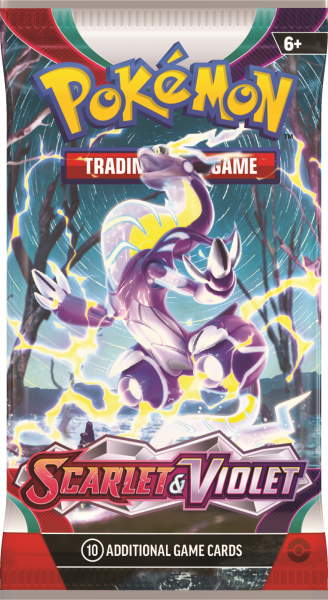
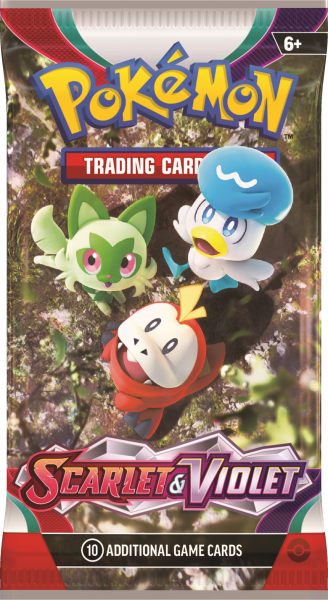
You’re now guaranteed 3 foil-style cards in every booster pack. This includes reverse-foil cards (of any available rarity), special artwork cards, holo-rares, and ultra rare or “full art” cards.
However, the distribution of these does not mean you have a chance of getting 3 full art cards, no, it just means you’ll usually get two reverse-foil cards and then a holo-rare or sometimes a Pokémon ex or full art/ultra rare card instead. Special illustration cards seem to replace one of the two reverse-foil cards rather than the rare or holo-rare slot, so you could get lucky and get a special illustration Pokémon ex and a full art Pokémon ex in a single pack (I think?), but the odds would be pretty small, and that’s only because the special illustration card replaces a different foil-style card of the 3 foil-style cards.
Yeah, that might be a bit confusing, but having extra rolls at reverse-foil cards is a good thing, because with expansion sets consistently hovering near or above the 200-card standard set mark (there are 258 total cards in this set if you count the secret rares), it can become overwhelming to try to collect the reverse-foil versions of all of the cards they are available for, so the extra reverse-foil card should help make that easier.
Return of Pokémon ex
One exciting thing about the Scarlet & Violet expansion is the return of Pokémon ex. Although similarly-named Pokémon-EX were present during the XY era of the TCG, they were always Basic Pokémon (or Mega Evolution), even for evolved Pokémon such as Charizard, meaning actual evolution cards (Stage 1 and Stage 2) became less and less used and the gameplay was focused more on hard-hitting Basic Pokémon. This was also the case for Pokémon-GX in the Sun & Moon era as well as Pokémon V during the Sword & Shield era, although they were named differently and had a few different mechanics.
The return of Pokémon ex is more like the old Pokémon-ex from the Ruby & Sapphire era of the TCG, where there are both powerful Basic Pokémon ex but also much more powerful evolved Pokémon ex. You’ll get 2 Prize cards whenever you knock out a Pokémon ex, but they are quite powerful by comparison, and the evolved Pokémon ex can have in excess of 300 HP. Wow!
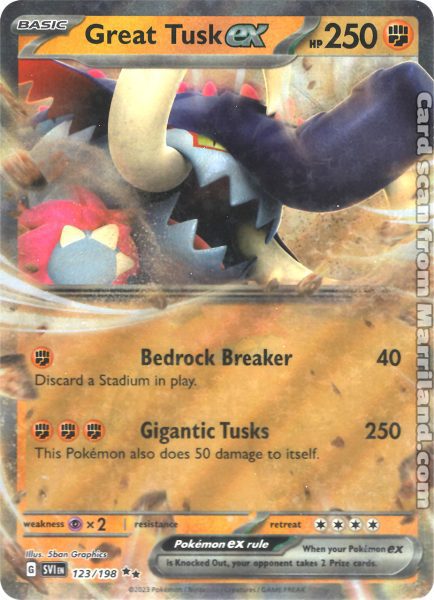
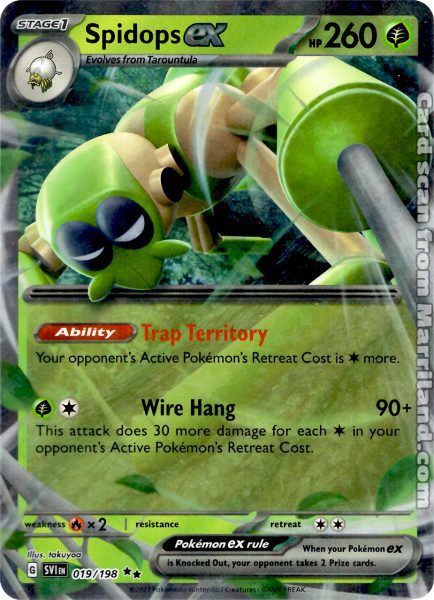
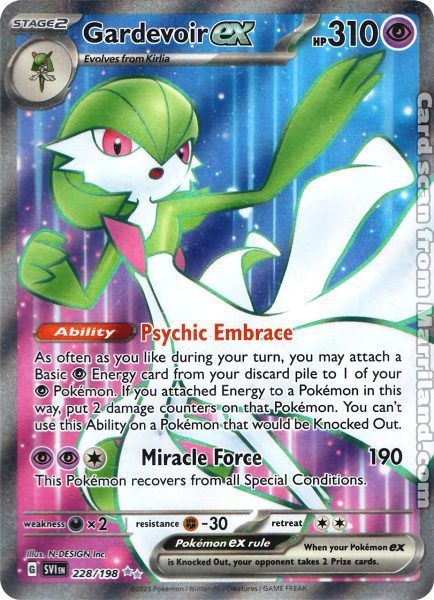
Above, you’ll find a few of the Pokémon ex cards that I pulled in my booster packs—Great Tusk ex (Basic), Spidops ex (Stage 1), and an ultra-rare “full art” Gardevoir ex (Stage 2) that looks quite nice.
It will be nice to see more emphasis being made on evolved Pokémon again, although the Sword & Shield series definitely tried to add a lot of useful evolution lines that weren’t Pokémon V and only coughed up 1 Prize card when defeated, so having the best of both worlds—strong evolutions that cough up 2 Prize cards—will hopefully provide extra strategies and considerations for the game.
Some New Cards I Like
Here’s a few of the cards that I pulled from the Scarlet & Violet Booster Box that I personally found to be interesting or powerful, based on their effects. Mind you, these are all just my opinions and I’m not a competitive TCG player nowadays, but hopefully it gives you some inspiration if you’re newer to the card game and are looking for some potential strategies. (Also keep in mind that these strategies and synergies are only looking at the Scarlet & Violet set; there may be plenty of combos and strategies from earlier and future sets!)
Skeledirge (038)
The Skeledirge from the new set has two very strong attacks for a relatively affordable cost.
Its first attack, Passionate Singing, costs just 1 Fire Energy and does 50 damage, which isn’t that bad by itself. What makes it great is that you also get to attach 2 Basic Energy cards from your discard pile to your Pokémon in any way you like, so you could attach two Fire Energy to Skeledirge and have it ready to use its strong attack next turn, or you can power up your Benched Pokémon to get them ready to continue Skeledirge’s show. This is particularly nice if you only need 50 damage or less to knock out the Defending Pokémon, which can often be the case doing 190 damage followed by 50.
Speaking of 190 damage, that’s what its second attack, Blazing Shout, does for three Energy (2 Fire and 1 Colorless). That’s a lot of damage! It does take 30 damage in recoil, though, but overall that’s not too bad. I like it more for its Passionate Singing, but Blazing Shout provides a reliable way to take down literally every single Stage 1 or Stage 2 Pokémon (from the set) that isn’t a Pokémon ex in one shot, and it will do substantial damage to any Pokémon ex as well.
Quaquaval (054)
Quaquaval is excellent for doing damage and also for accelerating your Pokémon. Its Energy Carnival Ability allows you to attach an extra Basic Energy card from your hand to any of your Pokémon once per turn (per Quaquaval). It can be any Energy and any Pokémon, regardless of their type, which is quite nice because a lot of similar cards from the past restricted what type of Energy you could attach or what type of Pokémon you could attach it to.
It has a very solid attack in the form of Hydro Kick, dealing 140 damage for 3 Energy, but only 1 of those Energy needs to be Water. This actually allows your deck to focus on a different Energy type, with maybe 4 or 5 Water Energy included in case Quaquaval needs to attack, since it can cover the 2 Colorless cost with anything. That opens up all sorts of possibilities, although since it’s a Stage 2 Pokémon, it still takes a bit of work and quite a lot of space in your deck to get it going.
Dondozo (061) and Tatsugiri (062)
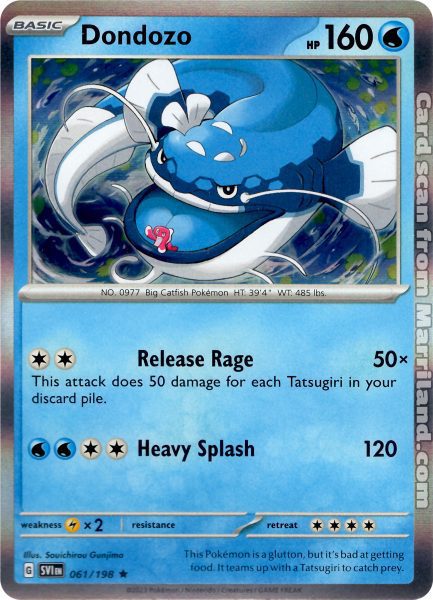
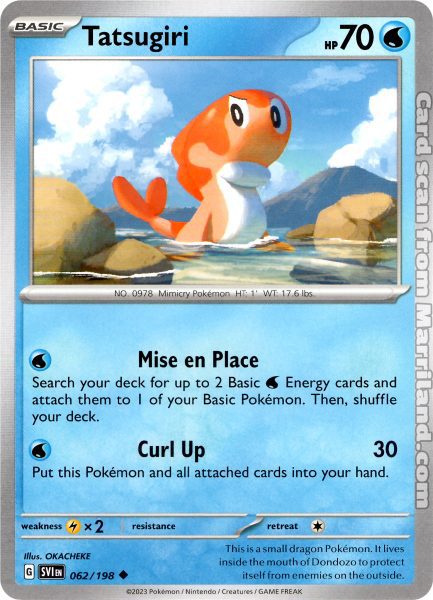
These two synergize well and are both Basic Pokémon, making them incredibly easy to get out, and since neither are Pokémon ex, you’ll only lose 1 Prize card if one is knocked out.
Ideally, you’ll want to start with Tatsugiri in this combo, as its Mise en Place attack allows you to search your deck for up to 2 Basic Water Energy cards and attach them to 1 of your Basic Pokémon. It doesn’t have to be a Water Pokémon, so keep that in mind.
You’ll want to use this to attach the 2 Energy to a Dondozo that you have on your Bench.
I’ll get back to Tatsugiri; let’s talk about that Dondozo now.
Dondozo has a massive 160 HP for a non-ex Basic Pokémon, which is fantastic. Its Heavy Splash attack is pretty expensive, costing 4 Energy total (2 Water, 2 Colorless), and hits for 120 damage, which is ok. Its secret weapon is actually its first attack, Release Rage, which costs 2 Colorless Energy and does 50 damage times the number of Tatsugiri in your discard pile.
For 2 of any Energy (meaning you could run this in a mixed deck), you can do up to 200 damage and risk only 1 Prize card.
Your Tatsugiri don’t evolve or do anything useful after attaching their Energy, so your goal is to use them to absorb damage and not worry about them getting knocked out, because that just fuels Dondozo. While they are sitting in the Active Spot, they’ll just power up all of your Benched Dondozo or anything else, until they get knocked out.
Use Ultra Balls to discard any extra Tatsugiri from your hand, because you won’t need them after the beginning. This also allows you to search for any Pokémon, so you can get more Dondozo, or if you have two Ultra Balls in your hand, you can use one to search for a Tatsugiri and then immediately discard it with the second Ultra Ball.
This sets up the Dondozo train, which will hopefully be doing a consistent 150–200 damage each turn with very little your opponent can do to stop it other than removing Energy cards.
You could also consider Stonjourner (121) from this set as an option, as it is another Basic Pokémon, has a solid 130 HP but also has a strong Ability, Exoskeleton, which reduces the damage it takes by 20 from attacks (including your own, though that’s not relevant here). It takes 1 Fighting Energy and 2 Colorless Energy to use Mega Kick for a solid 100 damage. What’s great about Stonjourner is that it’s a Fighting-type, meaning it covers Dondozo’s Weakness: Lightning. It will hit most Lightning Pokémon for 200 damage instead.
If you’re fighting against Lightning Pokémon, you can pretty easily pivot away from Dondozo and use Stonjourner instead, powering it up with Tatsugiri’s Mise en Place, and then using Dondozo as a backup. Balancing the right number of Water Energy with Fighting Energy would be important, though, but thankfully neither use too much of a specific type.
Indeedee (153)
With all of these new Evolution Pokémon excited to see play again, having a good way to get them out is important, and Indeedee is a reasonable option for any deck focusing on evolving.
For just 1 Colorless Energy, you can use its Expert Nurturer attack to search your deck for an evolution card for one of your Pokémon and evolve it immediately. And, once it’s your turn again, you should be able to evolve that Pokémon to its Stage 2 from your hand, as it was already in play at the start of your turn (source: Pokémon Rulings Compendium). That means you can fairly reliably get a Stage 2 Pokémon out on your second turn of being able to attack.
Its second attack, Hypnoblast, is really not worth using, but Expert Nurturer is great for any deck that depends on getting Stage 2 Pokémon out quickly and consistently. You’ll want to back it up with Item cards like Ultra Ball or even Nest Ball (as well as anything else from outside of Scarlet & Violet, though this article is focusing just on Scarlet & Violet cards).
Rock Chestplate (192)
Although there are some decent Supporter cards and Item cards, one card that really stuck out to me is Rock Chestplate. It’s a Pokémon Tool card and will only benefit Fighting-type Pokémon, but it prevents a respectable 30 damage from the opponent every time the Pokémon holding it is hit. That is effectively giving it 30 extra HP, but that effectiveness increases by 30 every time it’s hit because you’re reducing it by 30 for each hit.
Fighting-type Pokémon tend to be really strong in the TCG, and Scarlet & Violet have a lot of really good ones, including Great Tusk ex, Koraidon, Koraidon ex, the aforementioned Stonjourner, and even Klawf. These are all bulky Basic Pokémon that would benefit from some extra bulk. Stonjourner in particular loves it because that adds to its Exoskeleton, meaning it prevents 50 damage from each attack.
Keep in mind that Rock Chestplate only reduces damage done by your opponent’s Pokémon’s attacks, not your own, and any effect that places damage counters obviously aren’t affected because those are considered effects rather than damage. It’s still really good, in my opinion.
The “Cool” Cards I Pulled
While I did pull a lot of really neat cards, let’s face it, the ones you are all probably most interested in are the “ultra rare” cards or the special fancy illustration cards.
Here is a look at some of these fancier cards that I pulled (click on any to view it larger):
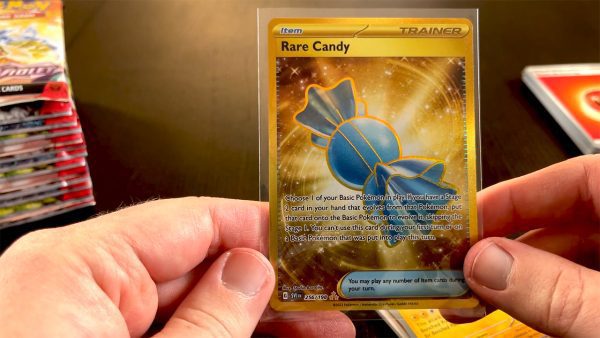
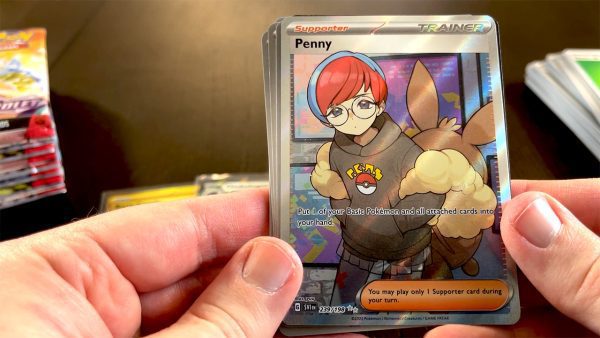
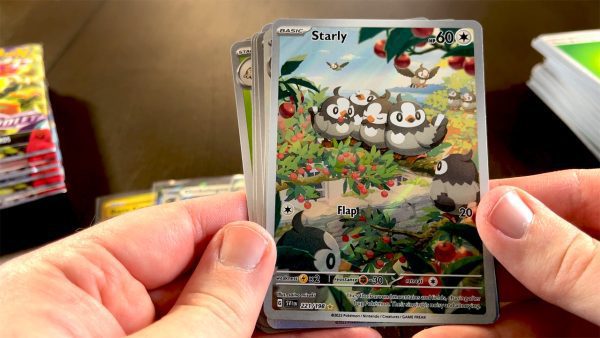
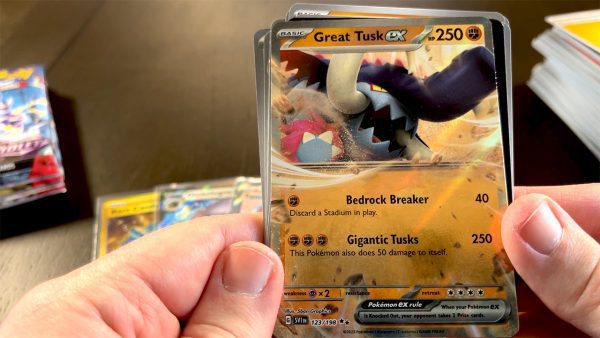
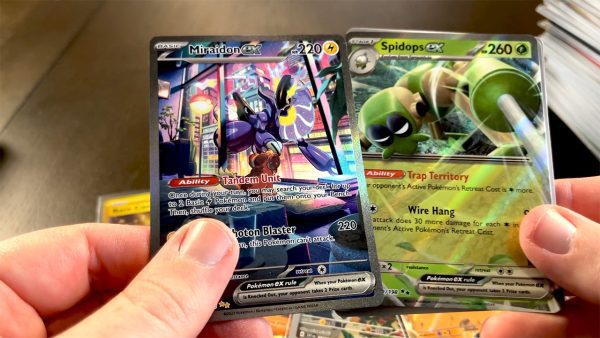
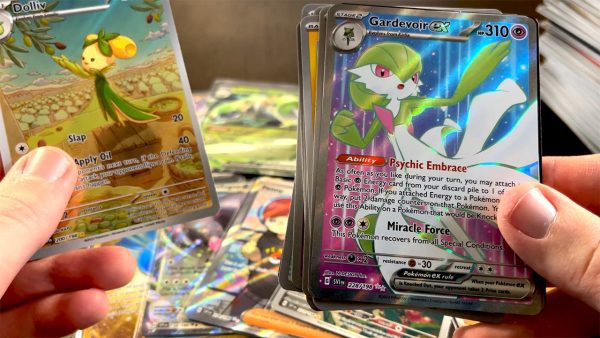
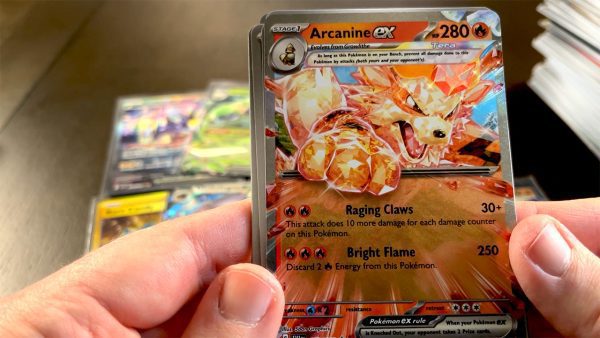
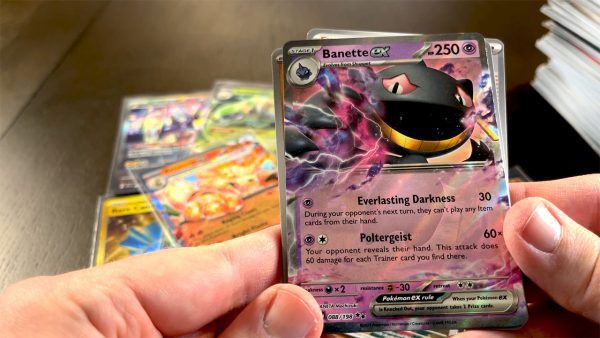
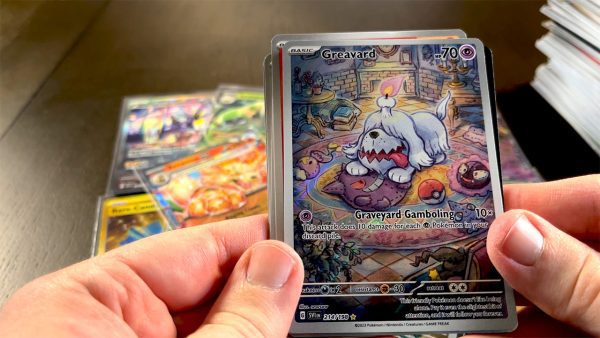
Definitely pulled some really neat cards, including some packs that had two separate fancy cards. The special illustration Miraidon ex and Spidops ex in one pack was particularly nice! And the secret rare golden Rare Candy was pulled very early on, so I knew it was going to be a good booster box!
View the Scarlet & Violet TCG Database
As previously mentioned, if you want to read more about the new Scarlet & Violet expansion, you can check out the TCG Database section here on the Marriland website, which has over 180 scans from the new set along with a complete listing of all of the cards and what they do.
Once again, I’d like to give a huge thanks to my friends at The Pokémon Company International for providing the product for this review (and the other recent reviews) that helped me cover the Scarlet & Violet TCG expansion ahead of its launch.
If you like what you see, be sure to track down some of the new Scarlet & Violet TCG cards at participating retailers or on the Pokémon Center website.
DISCLAIMER: The product covered in this review was provided by The Pokémon Company International free of charge. No monetary or financial compensation was exchanged for this review by either party, and all thoughts and opinions are independent.

